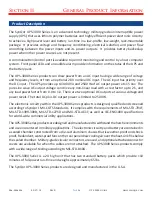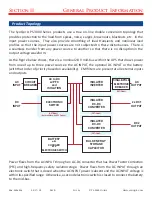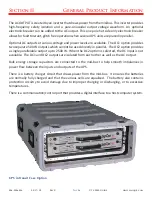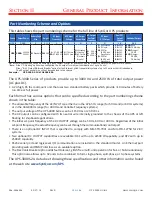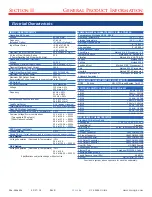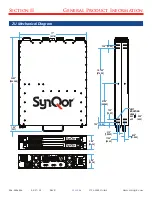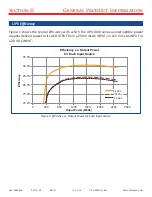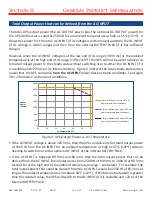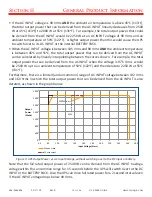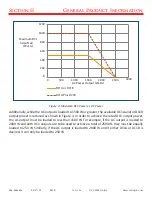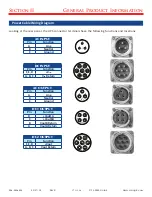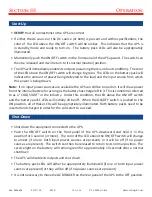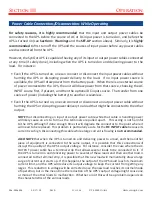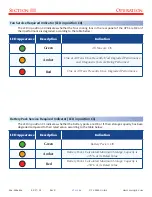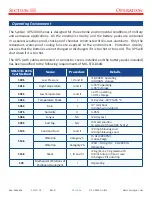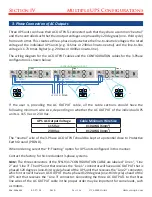
Section III
Operation
006-0006504 02/27/18
Rev R
21 of 56
UPS-3000 Guide
www.synqor.com
Power Cable Connections/Disconnections While Operating
For safety reasons, it is highly recommended that the input and output power cables be
connected to the UPS before the source of AC or DC input power is turned on, and before the
UPS is turned on (see Section I: Warnings and the SET-UP section above). Similarly, it is highly
recommended to first turn off the UPS and the sources of input power before any power cables
are disconnected from the UPS.
However, the SynQor UPS is capable of having any of its input or output power cables connected
at any time (if safely done), including when the UPS is turned on and delivering power to the
load. For instance:
• Even if the UPS is turned on, one can connect or disconnect the input power cables without
harming the UPS or disrupting power delivery to the load. If no input power source is
available, the UPS will draw power from the battery pack. When there is an external source
of power connected to the UPS, the unit will draw power from that source, choosing the AC
INPUT source first, if present, and then the optional DC input source. The transfer from one
source of power (including the battery) to another is seamless.
• Even if the UPS is turned on, one can connect or disconnect an output power cable without
harming the UPS or disrupting power delivery to a load that might be connected to the other
output.
NOTE that disconnecting an input or output power cable while that cable is handling power
will likely cause an arc to form as the terminals are pulled apart. This arcing is not harmful
to the UPS, although if done enough times it will degrade the connector to the point where it
will need to be replaced. This problem is particularly acute for the DC INPUT cable because its
current is so high. Disconnecting this cable while a large current is flowing is not recommended.
ALSO NOTE that when the UPS is turned on and delivering power to a load, and then another
piece of equipment is connected to the same output, it is possible that this connection will
disrupt the quality of the UPS’s output voltage. For instance, consider the case where the AC
OUTPUT power cable has a terminal strip that allows several loads to be connected to it. If
the UPS is turned on and delivering power to several of these loads and then another load is
connected to the terminal strip, it is possible that this new load will momentarily draw a large
surge of current as it starts up. If this happens, the output of the UPS could reach its maximum
current limit, and the UPS will reduce its output voltage to keep the current from getting any
larger. This reduction in voltage will be corrected once the new load reaches its normal mode
of operation, but in the mean time the reduction of the UPS’s output voltage might cause one
or more of the other loads to malfunction. Whether or not this will be a problem depends on
the characteristics of the various loads.

